
My husband and I both have Italian roots, with my family originating from Rome and his from Ischia. Whenever our conversations get animated, with wild hand gestures and raised voices, we often have to explain to our confused five-year-old that, “We’re not yelling, we’re just Italian!”
My garden has a natural inclination towards Italian vegetables (and, of course, tomatoes count as fruits). Yet, probably much like you, I’m constantly tweaking and reimagining my garden plans, experimenting with new plants to satisfy my gardening curiosity. This year, I’ve set my sights on creating a lavish Italian garden. I envision it being enveloped by vibrant vegetables and herbs that transport me to a picturesque Tuscan countryside. It’s going to be the kind of place where culinary wonders come to life, where tomatoes embody the essence of sunshine, basil exudes heavenly fragrances, and garlic shares the secrets of Italian cuisine.
As long as it doesn’t, you know, rain all summer or something!
Italian charm in small spaces
The beauty of cultivating these Italian treasures lies in their adaptability. You don’t need a sprawling garden or extravagant setups. Italian herbs are content in containers, window boxes, or even deck rail planters. These plants are incredibly versatile whether they bask in the outdoor sunlight, brighten up a sunny indoor nook, or travel with the seasons.
But here’s the exciting part: the Italian veggies and herbs on my list below are also great team players in raised beds or traditional gardens. So, even if you have just a 9-by-9-foot garden bed, you can create a mini Italian paradise.
A taste of Italy on your plate
I’ve handpicked a selection of Italian vegetables and herbs that will transport your taste buds to the heart of Italy. Get ready to immerse yourself in the essence of Italian cuisine with luscious tomatoes, fragrant basil, zesty garlic, robust radicchio, and more.
Some of these are annuals, like tomatoes and basil, while others are perennials, such as rosemary, sage, and oregano. Not everyone knows this, but rosemary thrives as a perennial in zones 7 to 10. With climate change affecting us so obviously, and the USDA changing planting zones recently, I may get rosemary as a perennial yet!
Planting for success
For optimal results, spring is the best time to plant these Italian gems, although perennials can find their roots in early fall, allowing them to flourish through the winter months (especially garlic!).
For those aiming for an extra dose of authenticity, Seeds From Italy serves as the U.S. distributor for Franchi Seeds 1783, the world’s oldest family-run seed company. Their unwavering passion lies in preserving the heritage and regional characteristics of everything they offer.
Although there are thousands of Italian varietals to choose from, I decided to select nine choice plants for a starter Italian garden, including three very special tomatoes. I’m also listing companion plants, and while there are many more, I tried to consider what we’re planting here so you’ll know what to plant near one another.
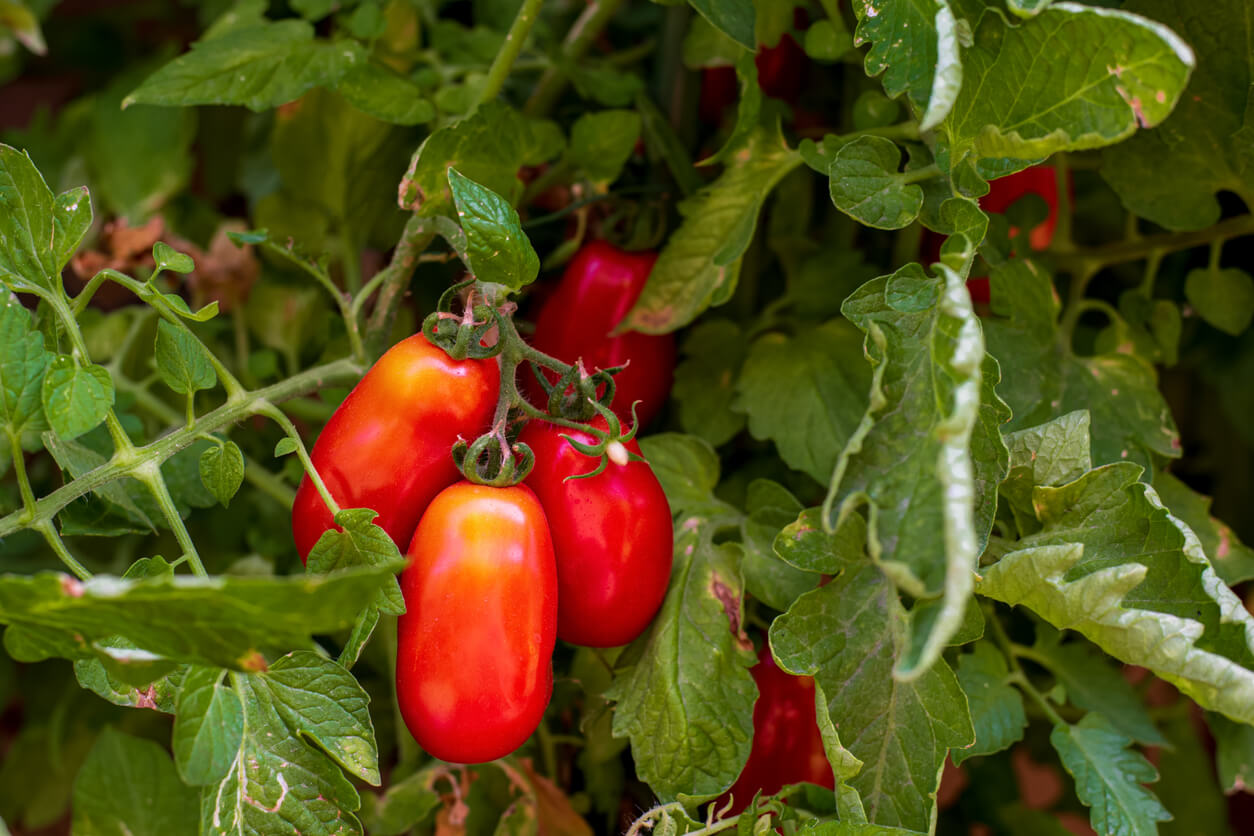
- San Marzano tomatoes
Famous for their elongated shape and sweet flavor; ideal for pasta sauces; require at least 24 inches of spacing, full sun, and well-draining soil. “True” San Marzanos grow near Mount Vesuvius, which are credited for their sweet, low-acid flavor, but they taste quite delicious from the backyard too!
- Companion plants: Basil, parsley, oregano, chives
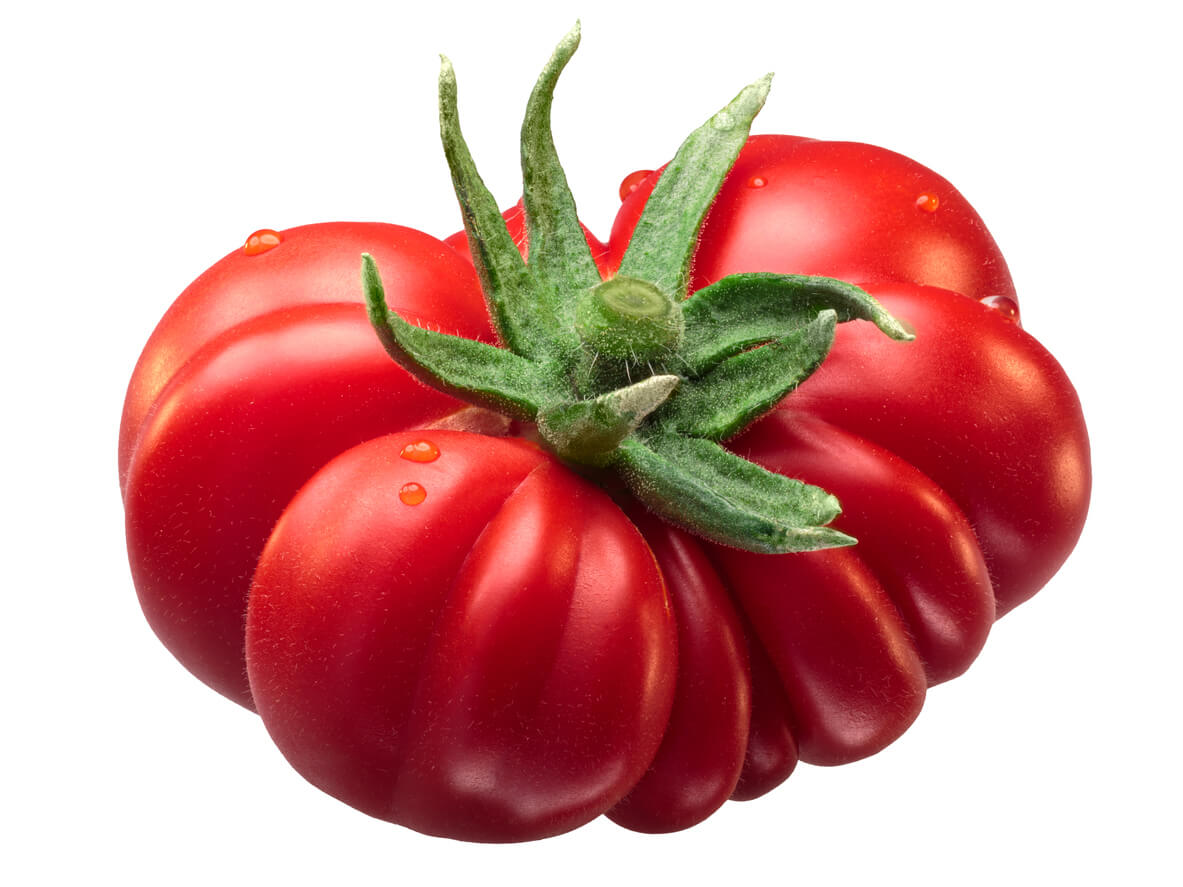
2. Costoluto Fiorentino tomatoes
Incredibly rich-flavored heirloom tomatoes with a ribbed, fluted shape; perfect for salads and sandwiches; need 18 to 24 inches of spacing, full sun, and well-drained soil. Italians consider this to be one of the best-tasting tomatoes available anywhere in the world.
- Companion plants: Basil, parsley, oregano, chives
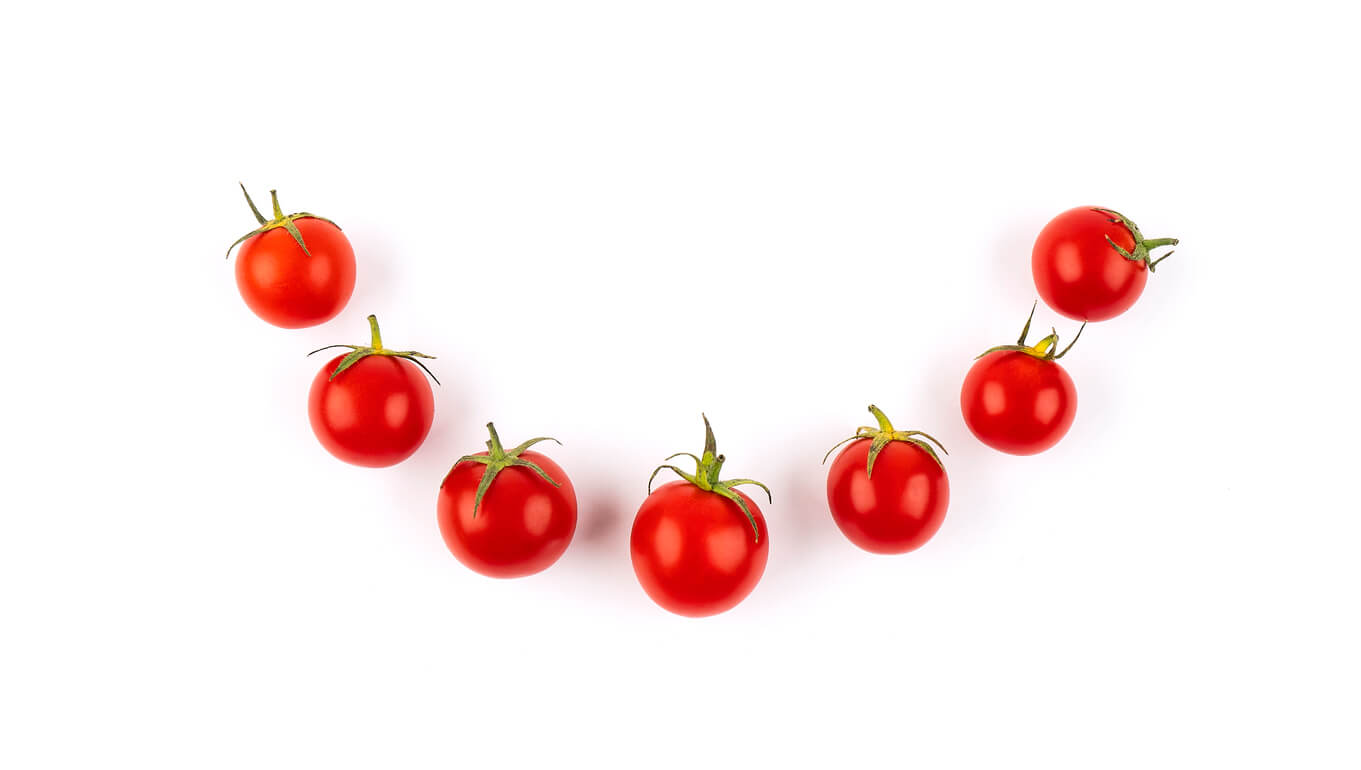
3. Pomodoro di Pachino tomatoes
Small, sweet tomatoes from Sicily; great for snacking and salads; thrive with 12 to 18 inches of spacing, full sun, and well-drained soil.
- Companion plants: Basil, parsley, oregano, chives
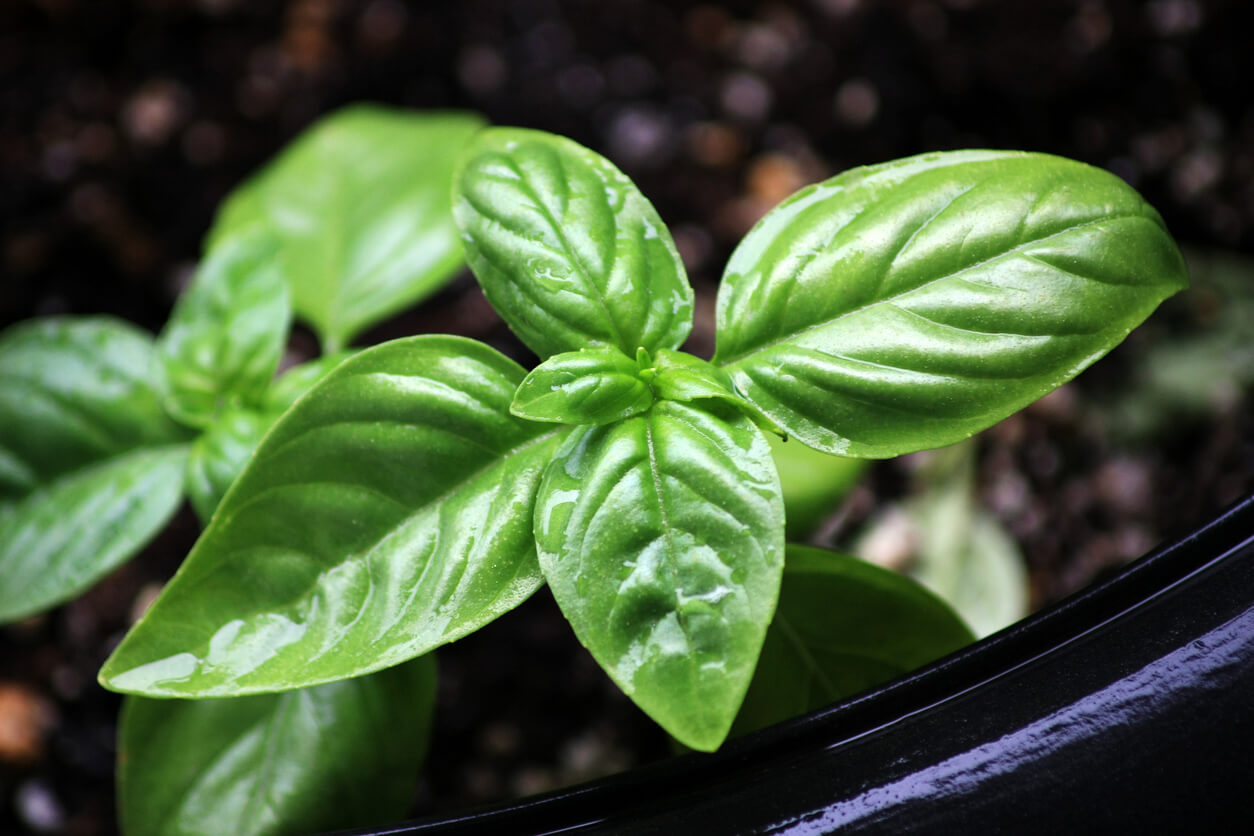
4. Genovese basil
Fragrant herb used in Italian and Thai cuisine; loves warm, sunny locations with well-drained soil; space plants 12 to 18 inches apart.
- Companion plants: Tomatoes, parsley, cilantro, oregano, chives, chamomile, borage, garlic, marjoram, rosemary
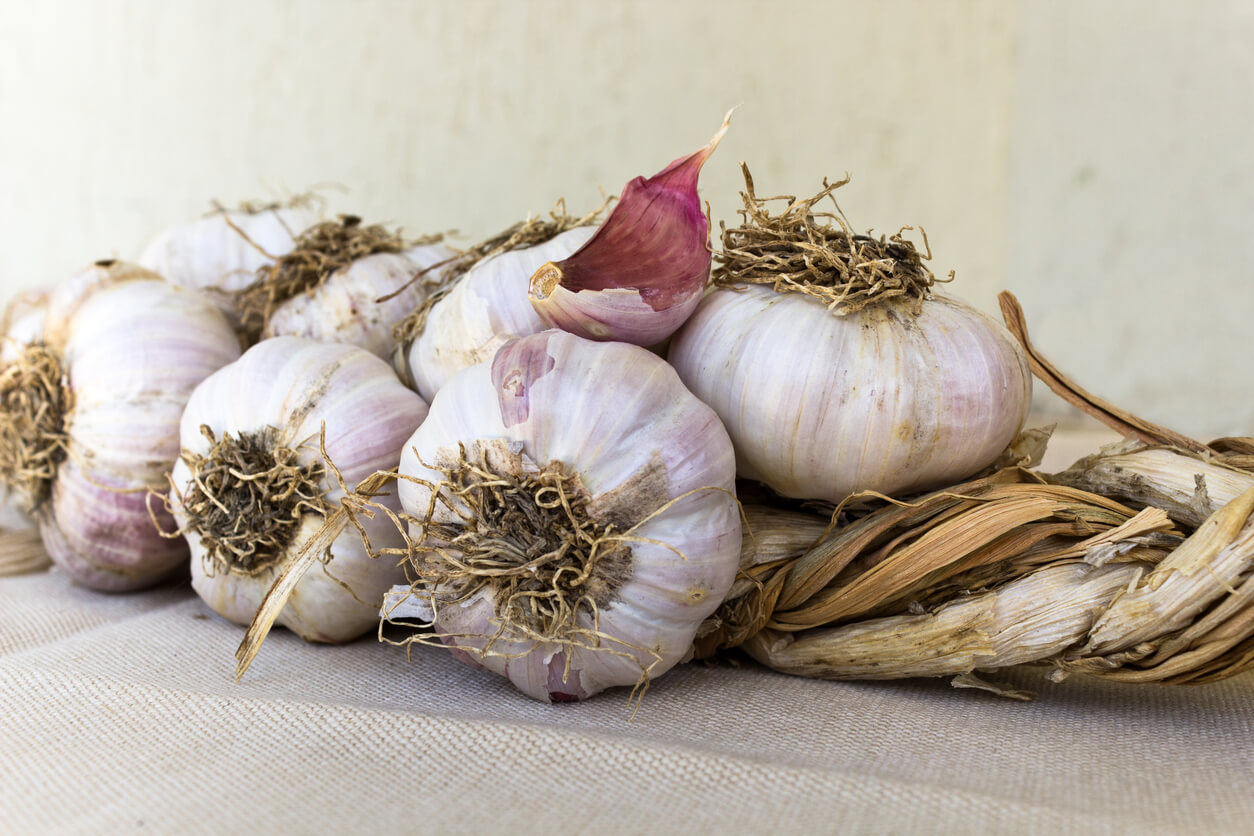
5. Red Sulmona garlic
Exquisite garlic from Sulmona, Italy; perfect for Italian dishes; characterized by scarlet-red coloration; requires 4 to 6 inches of spacing, full sun but can tolerate some shade, and well-drained soil. Can be planted between rows of radicchio.
- Companion plants: Tomatoes, lettuce, carrots, beets, radicchio
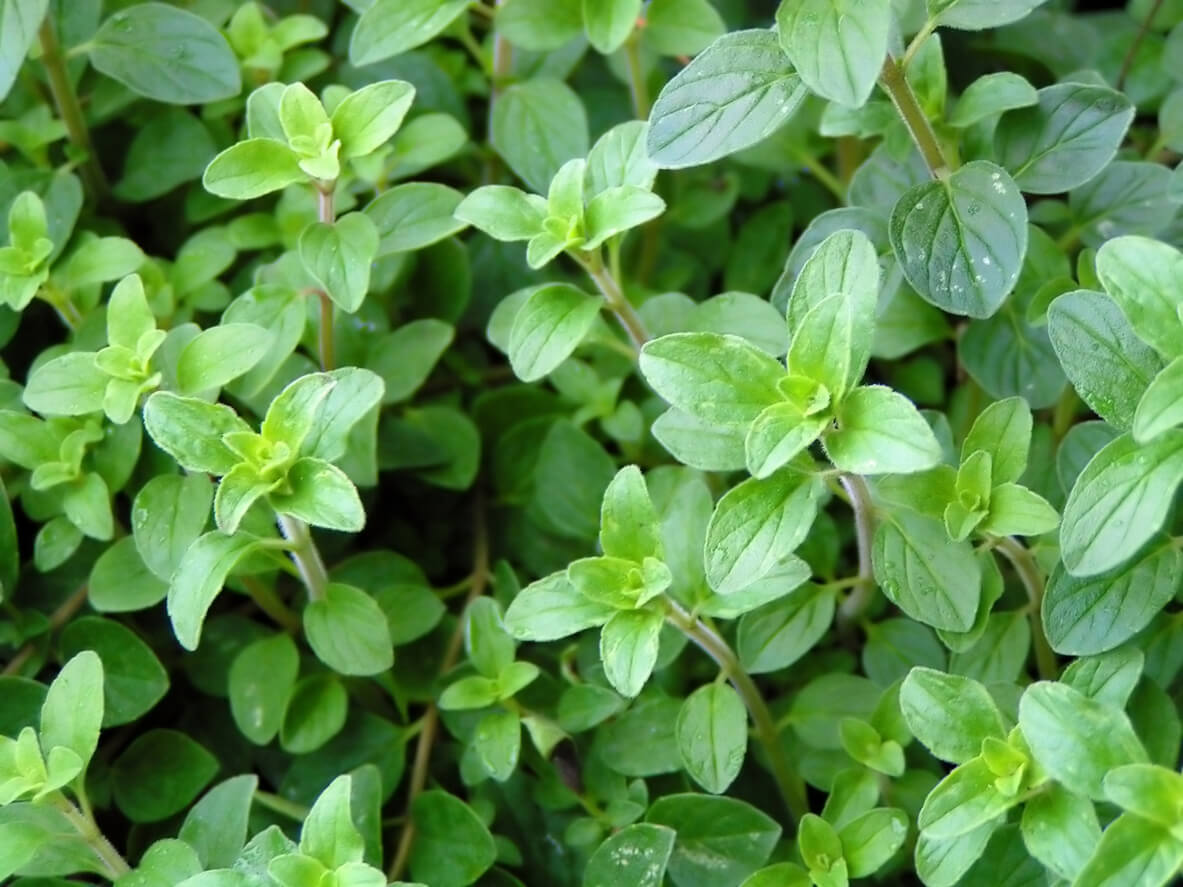
6. Italian oregano
Robust, earthy herb used in Mediterranean dishes; thrives in sunny, well-drained soil; space plants 12 to 18 inches apart.
- Companion plants: Tomatoes, basil, thyme, rosemary
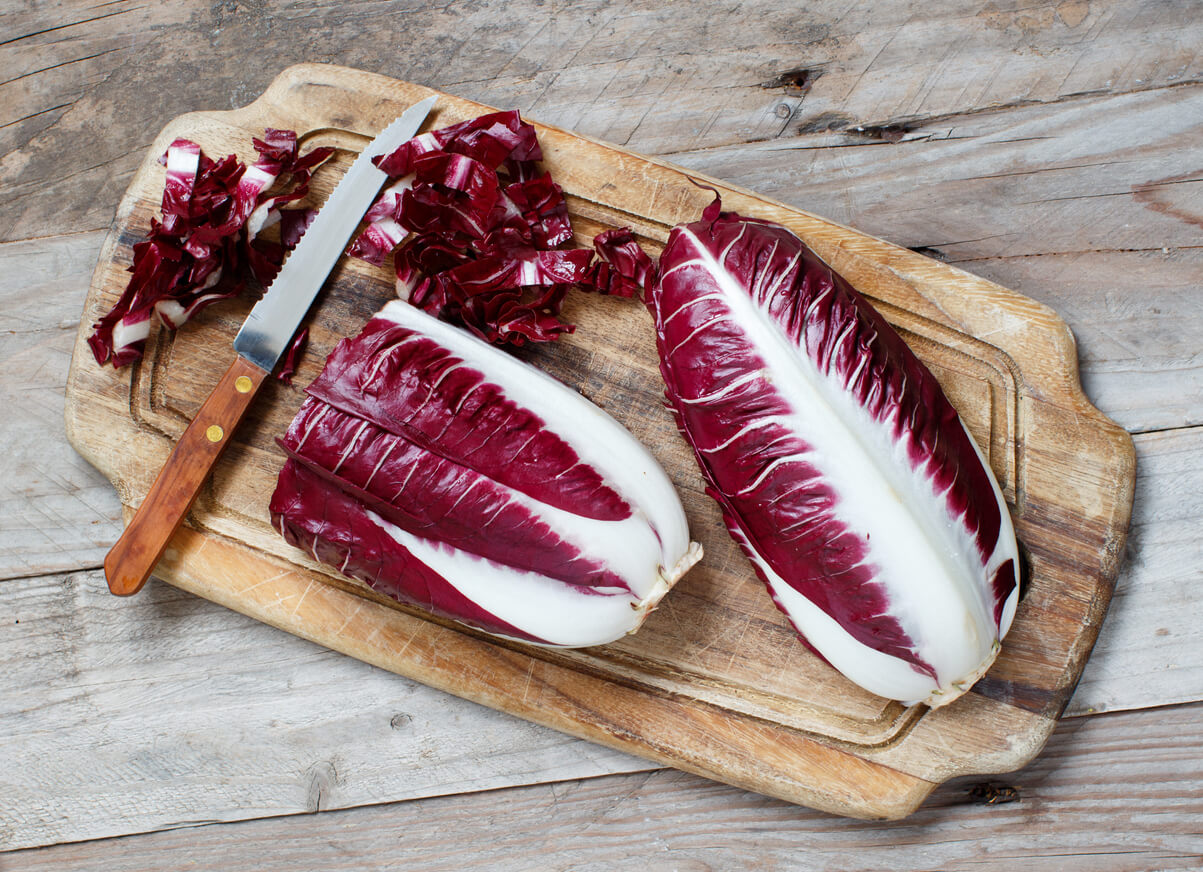
7. Early Treviso radicchio
Unique Italian chicory with reddish-purple leaves; mildly bitter flavor; enhances salads and sautéed dishes; needs 6 to 10 inches of spacing, partial sun, and well-drained soil.
- Companion plants: Lettuce, spinach, kale, chard, tomatoes, garlic
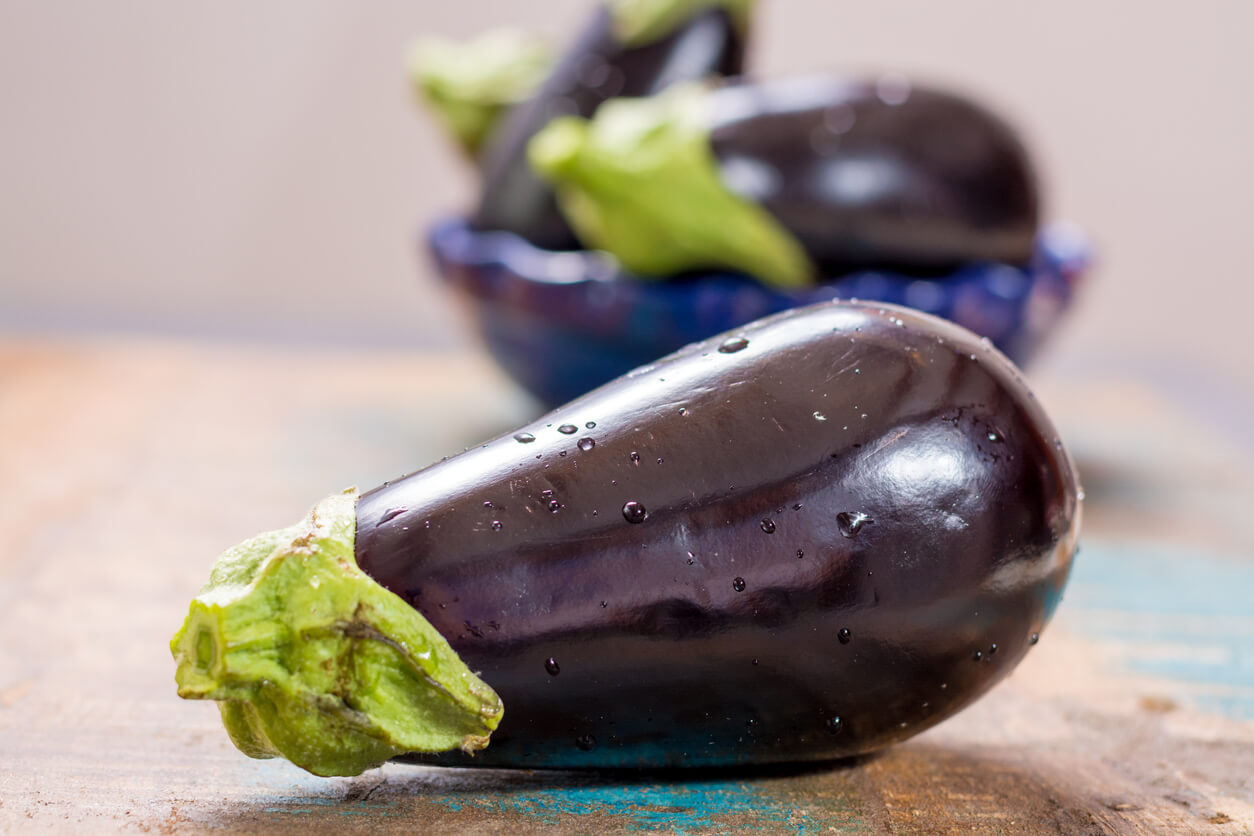
8. Traviata eggplant
Exceptional eggplant variety with a glossy appearance; perfect for various culinary creations; space plants 18 to 24 inches apart, full sun, and well-drained soil.
- Companion plants: Tomatoes, peppers, beans, spinach
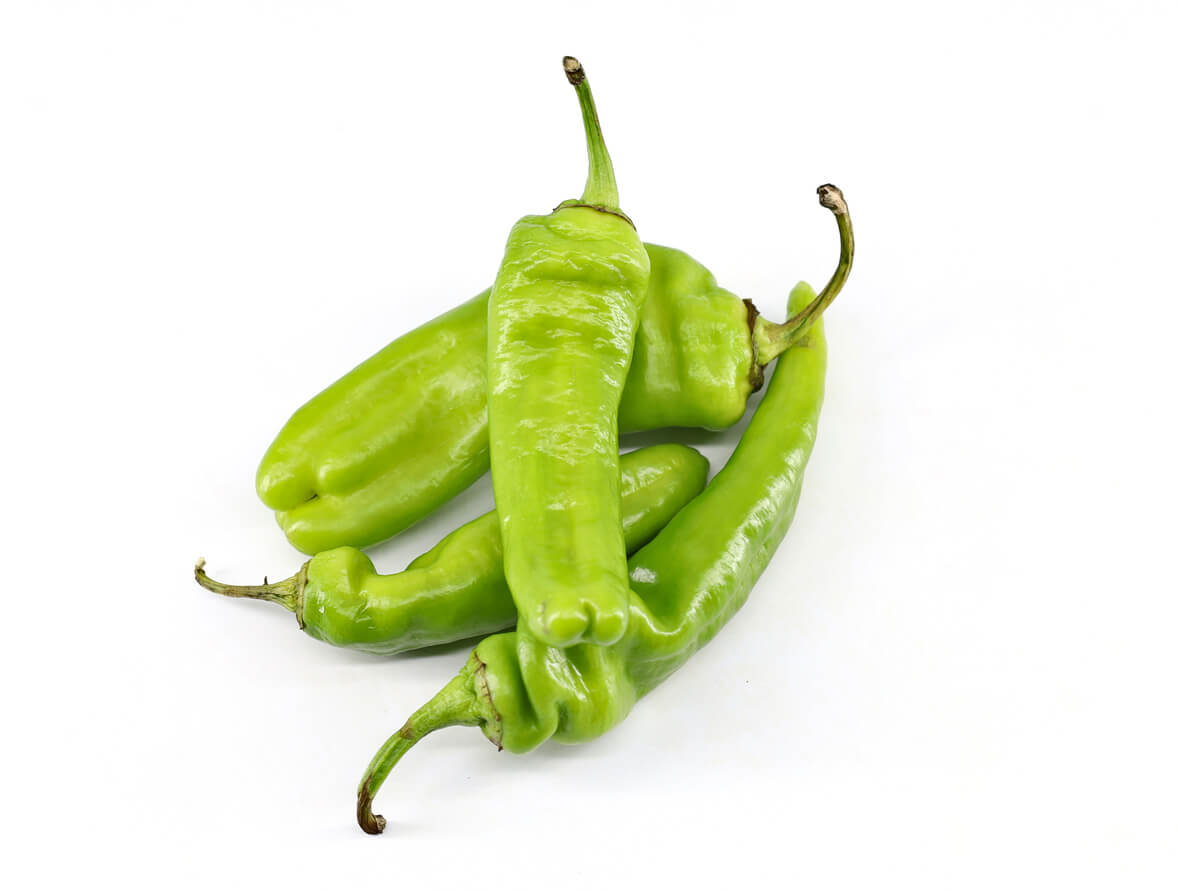
9. Friggitello peppers
Southeastern Italian peppers with mildly spicy flavors; popular for sautéing; require 18 to 24 inches of spacing, full sun, and well-drained soil.
- Companion plants: Tomatoes, basil, oregano, chives
This list is just the tip of the iceberg, but it offers a versatile variety of plants to create a myriad of delicious dishes. So, let’s dive deeper into these Italian delights.
Why these three tomatoes?
Sure, there are plenty of Italian tomatoes, but these three are true standouts:
- San Marzano tomatoes: These tomatoes reign supreme in the culinary world. They’re not just any tomatoes; they’re the only ones worthy of crafting Vera Pizza Napoletana, the quintessential Neapolitan pizza.
- Costoluto Fiorentino tomatoes: Hailing from Florence, these heirloom tomatoes are a sensory delight with their unique flattened, ribbed shape and deep crimson hue. They’re perfect for rich sauces and fresh creations.
- Pomodoro di Pachino tomatoes: Originating from Sicily’s Syracuse province, these tomatoes are known for their sweet essence and succulent flesh. They’re the stars of salads, pasta dishes, and more.
The rest of the Italian bunch
- Genovese basil: This sweet basil variety from Genoa is famous for its role in pesto-making. It’s aromatic and perfect for your Italian dishes.
- Red Sulmona garlic: This garlic variety, also known as Aglio Rosso di Sulmona, is prized for its subtle, delightful taste. It elevates Italian dishes like bruschetta and Spaghetti Aglio Olio e Peperoncino.
- Italian oregano: Thriving on picturesque Italian hillsides, this oregano is mild and sweet, making it the ideal pizza topping. It even self-seeds for future harvests!
- Early Treviso radicchio: This Italian radicchio variety is harvested in early September and pairs wonderfully with cheese and salads.
- Arugula Coltivata: Italian arugula grows fast and has a peppery kick. It’s perfect for salads, sandwiches, and more.
- Tuscany Italian lettuce blend: If you’re into lettuce, this blend offers five popular varieties that will transport you to the hills of Tuscany.
- Traviata eggplant: In Sicilian cuisine, eggplants are revered, and Traviata is a favorite for its glossy appearance and exceptional flavor.
- Friggitello peppers: These sweet Italian peppers are versatile and can be used in various dishes, from sautéed creations to salads.
Planting Italian dreams
But planting isn’t just about throwing seeds in the ground. Providing adequate space is crucial, and the recommended spacing varies depending on the specific veggie or herb.
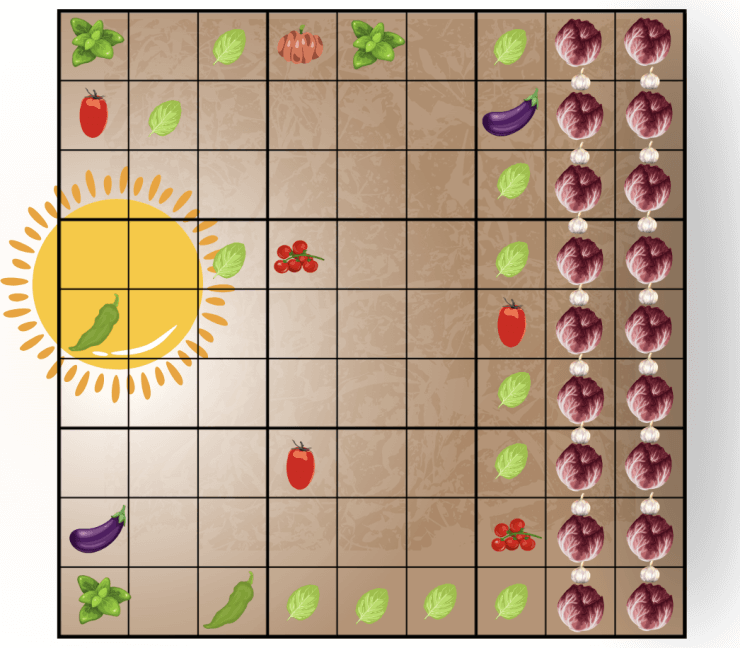
Above is an example of a 9-by-9-foot garden, in mostly full sun, where each square represents a foot. It attempts to represent potential spacing, companion planting, a sunny west side of the garden, and a shadier east side of the garden. This may feel sporadic and spacious, and that’s because many of these plants require space, though you can still grow an enormous amount of food in this small space.
Cultivating these Italian veggies and herbs is a rewarding journey, especially if you start with quality seedlings. Growing from seeds can be challenging, but pre-establishing them in pots significantly improves their chances of thriving.
So, let’s dig deeper into the characteristics of these Italian wonders, each adding its unique charm to your Italian garden. Your adventure into the world of Italian flavors starts right here, right now! Get ready for a culinary journey like no other. Buon appetito!


 Previous
Previous


In clay soil, try composting right in the garden. Toss compostibles between rows and scratch them in when they start decomposing. It takes time to completely loosen clay. I have also used garden planting soil from the Big Box stores and mixed it with the clay. It helps. I figured out one year that buying a smal truckl oad and using 3 cubic foot bags covered about the same sq footage. You have to pay for delivery and then shovel all that soil. Bags are easy to buy 1 or 2 at a time and easily taken from car trunk to garden if you have a wheel barrow. I don’t have a barrow, so I just shovel the soil from the big bag to pots or a bucket and use it that way. If my son is around,. he will lift it for me. I have been known to smile my best smile and ask for help from a nice young neighbor. PS I am 82 anyone under 60 is young to me. We lols (little old ladies) know how to ask for help.
I am Italian-Scotch-Irish and I have had a garden all my adult life. I grow San Marzano, Plum & Amish Paste, Rutgers tomatoes along with all the herbs mentioned here, sweet and hot peppers, zucchini, squash, beans etc. I love finding new varieties of veges to grow each year. This year, I’m doing several above ground containers to grow my root crops, since I have no luck with my clay soil here in PA, regardless of how may times I get it tested and add what’s recommended. Its just too rocky. Thanks for all the articles! It’s a great place to find anything vege and more!
My family is also from Ischia and we love growing vegetables I am growing eggplant and basil and tomatoes right now, with the weather here in TX all year round is great for growing